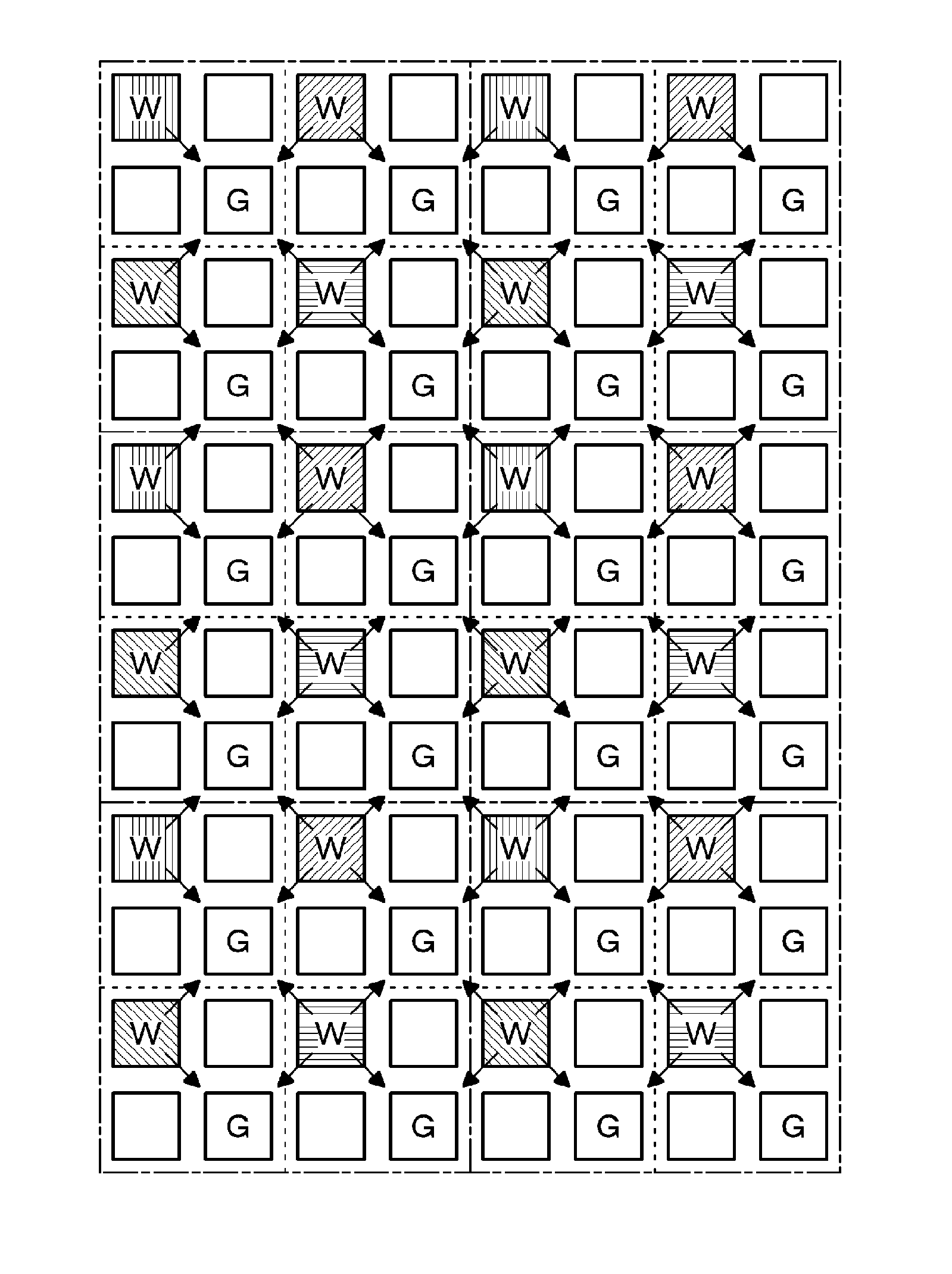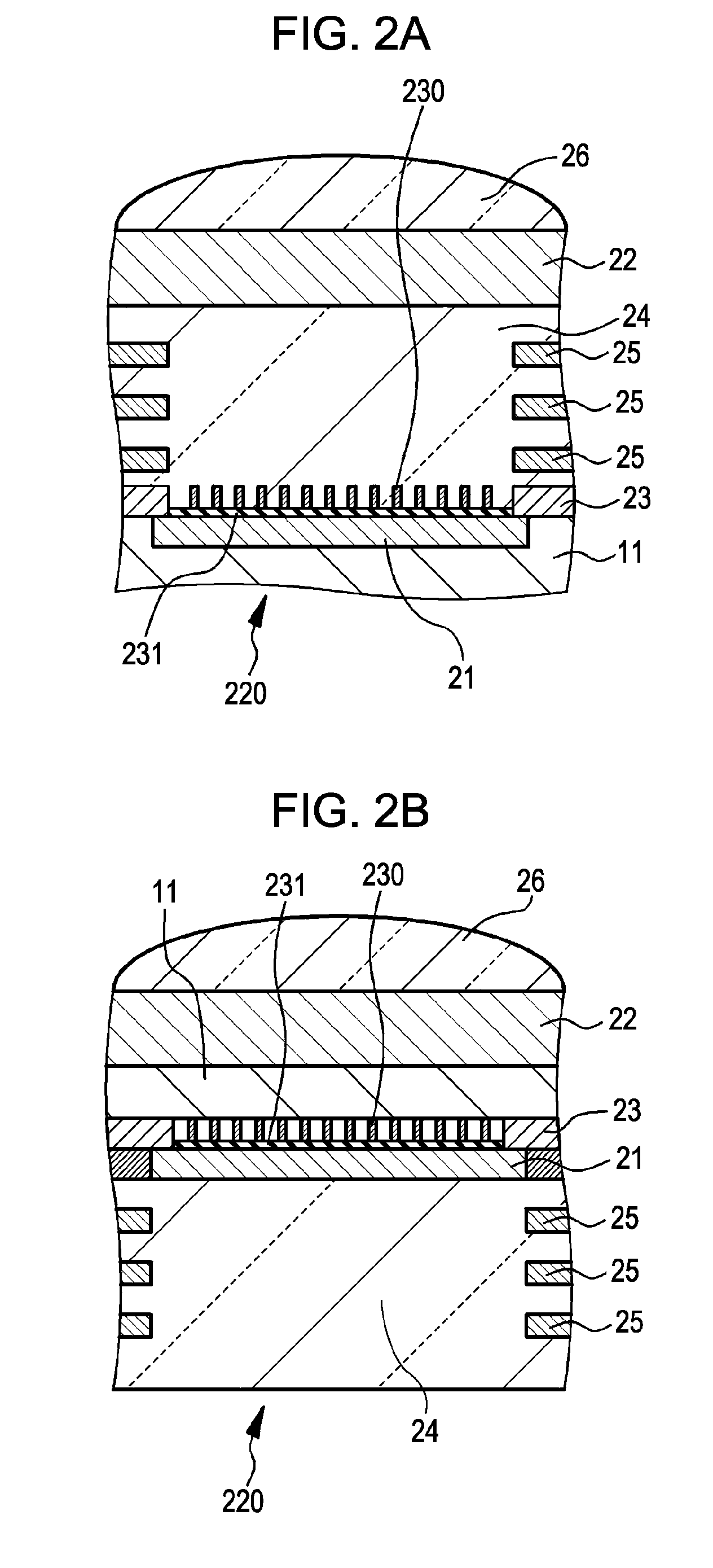Two-dimensional solid-state image capture device and polarization-light data processing method therefor
- Summary
- Abstract
- Description
- Claims
- Application Information
AI Technical Summary
Benefits of technology
Problems solved by technology
Method used
Image
Examples
first embodiment
[0061]A first embodiment relates to a two-dimensional solid-state image capture device according to a first mode and a fourth mode of the present invention and to a polarization-light data processing method for the two-dimensional solid-state image capture device according to the first mode of the present invention. FIGS. 1A and 1B show partial schematic cross-sectional views of the two-dimensional solid-state image capture device in the first embodiment, FIGS. 5 to 9 schematically show plan layout views of sub-pixel regions 120 in the first embodiment, and FIGS. 4A and 4B are partial plan views of a polarization member 130.
[0062]In a two-dimensional solid-state image capture device in the first embodiment or each of the second to fourth embodiments described below, multiple pixel areas are generally arranged in a two-dimensional matrix in an X direction and a Y direction and each pixel area is constituted by multiple (M0) sub-pixel regions 120, where M0=4 in the embodiment. Each su...
second embodiment
[0092]A second embodiment relates to a polarization-light data processing method for a two-dimensional solid-state image capture device according to a second mode of the present invention. The two-dimensional solid-state image capture device in the second embodiment may have the same configuration as the two-dimensional solid-state image capture device described above in the first embodiment, and thus, a detailed description is not given hereinafter.
[0093]The polarization-light data processing method for the two-dimensional solid-state image capture device in the second embodiment is a simplified one of the polarization-light data processing method for the two-dimensional solid-state image capture device in the first embodiment, thereby achieving a reduction in the amount of data processing. In the polarization-light data processing method for the two-dimensional solid-state image capture device in the second embodiment, Iq denotes the light intensity of light that is incident on th...
third embodiment
[0095]A third embodiment relates to the two-dimensional solid-state image capture device according to the second mode of the present invention. In the two-dimensional solid-state image capture device in the third embodiment, as shown in a schematic partial cross sectional view in FIG. 2A or 2B, a polarization member 230 is disposed at the light inside side of at least one of sub-pixel regions 220 constituting each pixel area. Each sub-pixel region has a light-shielding layer 23 for controlling (restricting) incidence of light on the photoelectric conversion element. The polarization member 230 and the light-shielding layer 23 are disposed on the same virtual plane. In this case, the polarization member 230 is a wire-grid polarization member and is made of, for example, aluminum (Al) or copper (Cu), and the light-shielding layer 23 is made of, for example, aluminum (Al) or tungsten (W).
[0096]The two-dimensional solid-state image capture device shown in FIG. 2A is a frontside-illumina...
PUM
 Login to View More
Login to View More Abstract
Description
Claims
Application Information
 Login to View More
Login to View More - R&D
- Intellectual Property
- Life Sciences
- Materials
- Tech Scout
- Unparalleled Data Quality
- Higher Quality Content
- 60% Fewer Hallucinations
Browse by: Latest US Patents, China's latest patents, Technical Efficacy Thesaurus, Application Domain, Technology Topic, Popular Technical Reports.
© 2025 PatSnap. All rights reserved.Legal|Privacy policy|Modern Slavery Act Transparency Statement|Sitemap|About US| Contact US: help@patsnap.com



